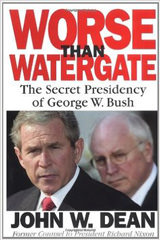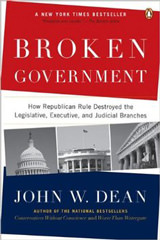On August 19, former New York Attorney General (and later, New York Governor) Eliot Spitzer was sued for defamation in the U.S. District Court for the Southern District of New York. He was also sued for defamation in a related case in a New York state court.
The lawsuits against Spitzer are both based on an opinion piece that he published about a year ago in Slate, the Washington Post’s online magazine. (The suits’ filing was likely triggered by the fact that New York’s one-year statute of limitations for defamation claims was about to expire.)
The plaintiffs, William Gilman, and Edward McNenney, are two former top executives at the insurance/finance powerhouse Marsh & McLennan. Spitzer once prosecuted the two, but their convictions were later overturned. Now, via their defamation complaints, they seek millions of dollars in damages from Spitzer.
The case caught my attention for several reasons. First, it is unusual—and perhaps unique—in that two former criminal defendants are suing their former prosecutor, based on a description of the case that he provided to the press after he had left office.
Second, I am extremely pro-plaintiff in most defamation cases, but this may turn out to be an exception.
Generally, I’m hopeful that public-figure plaintiffs will prevail in such cases (when, of course, their claims are meritorious) because I believe that the filing of such suits by high-profile people, from time to time, is necessary in order to keep reporters and writers honest.
American defamation law—which has been federalized by constitutional standards dictated by the U.S. Supreme Court—is sharply tilted against the public person who takes action against those who defame him or her. Thus, a cleverly written, carefully vetted report can fairly easily be made defamation-proof by lawyers, even if it is shot through with the kind of misrepresentations and insinuations that are extremely damaging to reputation.
In sum, the law as it now stands provides a sanctuary for dishonest reporters and writers who are inclined to viciously and unfairly attack public officials and public figures. Yet the filing of a few high-profile suits, in some truly egregious cases, may keep the press on notice that despite the Court’s doctrine on defamation, there are still lines that cannot be crossed.
Unfortunately, though, the suits against Spitzer may not fall into this worthy, and worthwhile, category of lawsuits—as I will explain.
Some Defamation Basics: Why the Supreme Court Intentionally Created an Anti-Plaintiff Area of Law
The lawsuits against Spitzer appear to me to involve public-figure plaintiffs. As I noted above, defamation law in general is hostile to plaintiffs, and its rules regarding the determination of who counts as a public figure are no exception. Thus, even a person of whom few have ever heard, can still be deemed a limited-purpose (or even, occasionally, a general-purpose) public figure.
This pro-media (if not anti-public person) tilt in defamation law is as it should be, under our First Amendment. When a person’s ability to protect his or her good name clashes with our constitutional commitment to free speech, the law should—as it now does—give the speaker (or writer) an advantage.
Thus, in a series of cases starting with New York Times v. Sullivan (1964), the Supreme Court has consistently held that to prevail in a defamation lawsuit, public officials and other public-figure plaintiffs must show fault—described by the Court as “actual malice”—on the part of the person making the purported defamatory statement.
This requirement, the Court has explained, exists in order to assure that “debate on public issues [will] be uninhibited, robust, and wide-open.” In short, defamation law is not a level playing field; instead, writers and publishers are given a distinct advantage.
“Actual malice” has proven to be a very poorly chosen term, which the news media never seems to understand when reporting on defamation cases. To begin, as the Court has made clear, actual malice has nothing to do with the defendant’s actually taking malicious actions against the plaintiff.
Rather, a defamatory statement is made with “actual malice” if its author or publisher knows it to be false, or publishes it with reckless disregard as to whether it was true or false. (In this context, one can think of “reckless disregard” as a blameworthy level of carelessness.)
Under this standard, the High Court has recognized that even erroneous statements, if made without fault, must be protected. Such statements are inevitable in free debate, and must enjoy a legal haven, if freedom of expression is to have the breathing space that it needs to survive.
Thus, in the typical defamation case, the Court’s rules—though often hard on genuinely injured plaintiffs—make quite a bit of sense. But the case against Spitzer, it appears to me, may be different.
Why This Is Not a Typical Defamation Case
After I downloaded a copy of Gilman’s complaint and read it, I realized that this was not a typical public-figure lawsuit, where the public-figure plaintiff must struggle with a body of law that favors freedom of speech over the protection of the reputations of public people.
Instead, after reading the complaint, my view was that Gilman’s suit seems to be based on fumes. The claims appear on their face to be exaggerated; and it has the feel of an action that is fueled by retribution.
Note: I was unable to locate McNenney’s state-court defamation complaint online, but based on press accounts, it sounds very similar to Gilman’s. But since I have not seen the complaint, I, of course, cannot directly address it here. Thus, when I refer to a complaint here, I am referring to Gilman’s complaint.
Also, interested readers may find the complaint at Justia’s Docket & Filings section by searching for “Gilman v. Spitzer”.)
The Background Necessary to Fully Understand the Allegations in Gilman’s Complaint
Both Gilman and McNenney appear to have lost their jobs at Marsh & McLennan because of the criminal investigation that was launched at the firm by Spitzer when he was New York’s Attorney General.
Ultimately, criminal charges were filed against Gilman and McNenney. The cases were tried when Andrew Cuomo was Attorney General; and Gilman and McNenney were convicted. But those convictions were later overturned because of the prosecutors’ failure to provide the defense with exculpatory evidence as is required by law.
In mid-January 2011, Attorney General Eric Schneiderman decided not to appeal the decision to overturn the convictions or retry Gilman and McNenney.
Meanwhile, the conflict was playing itself out not only in the courts, but also in the press. On August 13, 2010, Rupert Murdoch’s Wall Street Journal had editorially attacked Spitzer’s handling of the criminal and civil cases against Marsh & McLennan and its former employees. It was a typically nasty six-hundred-plus-word Journal (pay-walled) editorial that all but defended corporate excesses, if not criminality.
Then, on August 22, 2010, Spitzer responded to the Journal’s attack in Slate. Significantly, neither the Journal editorial nor Spitzer’s response mentioned either Gilman or McNenney by name. But Gilman and McNenney nevertheless apparently believe that Spitzer’s editorial implicitly targeted them, nonetheless.
Thus, from Gilman and McNenney’s point of view, they had been exonerated, only to then be attacked by the news media and the very man who had initiated the proceedings that led to their convictions.
But was it fair to say that Spitzer’s article was “of and concerning” Gilman and McNenney, as defamation law requires?
Readers can judge for themselves, at least as to Gilman, whose complaint is publicly accessible. The following italicized statements are the ones from Spitzer’s Slate article that Gilman’s complaint isolates as purportedly defaming him:
Spitzer wrote that the Journal editorial had been critical of “two of the cases” against Marsh & McLennan “employees,” which had been tried after his tenure as Attorney General, and where the judge found that evidence should have been turned over to the defense.
Spitzer continued: “Unfortunately for the credibility of the Journal, the editorial fails to note the many employees of Marsh who have been convicted and sentenced to jail terms, or that Marsh’s behavior was a blatant abuse of law and market power: price-fixing, bid-rigging, and kickbacks all designed to harm their customers and the market while Marsh and its employees pocketed the increased fees and kickbacks.”
Spitzer closed this paragraph by noting that Marsh & McLennan paid an $850-million fine to resolve the claims, and brought in new leadership after Marsh’s CEO was forced to resign.
Some Serious Problems With the Gilman Complaint
If Gilman’s complaint, which is based on the italicized statements above, survives a motion to dismiss, it will be a miracle—for a number of reasons.
First, and most glaringly, the statements by Spitzer that are claimed to be defamatory do not strike me either as relating to Gilman or as being false or defamatory. To the contrary, the statements appear to me to be true, based on my review of contemporary press coverage, as well as of other statements in the complaint itself.
Paragraph 25 of Gilman’s complaint claims that Spitzer’s statement that “two of the cases” against “employees” was, in fact, a reference to Gilman.
More specifically, that paragraph states: “Anyone that [sic] followed the cases in the newspaper, or was aware of the charges against Marsh or its employees at all could readily identify Mr. Gilman as one of the two employees at issue.”
That may be true, but the purported defamatory statement does not relate to “two of the cases.” Rather, if you read the statement in context, it relates to “many employees of Marsh.” Thus, it is anything but clear that Spitzer’s statement is “of and concerning” Gilman, as defamation law requires.
Indeed, Spitzer appears to be referring to other cases—not Gilman’s. According to Business Insurance, some twenty-one Marsh & McLennan employees pled guilty and cooperated with Spitzer’s investigation. (While some of these guilty pleas were later removed, the Business Insurance report explained that the court’s action was the “judicial equivalent of a pardon, rather than a finding of innocence.” And, Business Insurance later reported that others were, in fact, sentenced.)
Granted, a defamatory statement can relate to a group of persons, but that group must be sufficiently small to be clearly identifiable. And, given the fact that Spitzer’s statement appears true, as I will explain, it is not likely the court will reach the question of whether this group was sufficiently small to allow this kind of defamation claim to be brought.
Paragraph 27 of the Complaint claims that Spitzer defamed Gilman by stating “many employees of Marsh” had been “convicted and sentenced to jail terms.” This statement is incorrect, as footnote two (on page 5 of the Complaint) makes clear: “Messrs. Gilman and McNenney were initially sentenced to 16 weekends of incarceration but that sentence was vacated by the Court and never served.” In addition, Business Insurance makes clear that many Marsh employees were convicted.
It seems that Gilman wanted Spitzer to add that, in the end, no one went to jail. But Spitzer’s failure to add this fact to his Slate piece does not make Spitzer’s assertion untrue—and in the context he makes the statement, it is not even unfair. To be actionable, a defamatory statement must be false. Truth is an absolute defense. Even proof of substantial truth (roughly, that the gist of the statement at issue is true) makes out a complete defense.
Gilman’s Complaint also proceeds (in paragraphs 29–35) to set forth additional defamation claims. These claims are based on Spitzer’s statements about Marsh’s behavior being “a blatant abuse of law,” involving “price-fixing, bid-rigging, and kickbacks,” which harmed “their customers” and the markets, while “Marsh and its employees pocketed the increased fees and kickbacks.”
To claim that these statements—which plainly are about the company and its employees, generally—are “of and concerning” Gilman in particular, is beyond a reach. Marsh & McLennan has over 50,000 employees, and Marsh itself paid an $850 million fine to resolve these very claims, which was all but an admission that they were true.
These core matters are not questions of fact; rather, they are questions of law. Thus, I will be quite surprised if the judge to whom this matter was assigned, U.S. District Court Judge Richard J. Sullivan, does not grant the motion to dismiss that Slate and Spitzer are sure to file soon.
What About an Anti-SLAPP Action?
After reading the Gilman complaint, my first reaction was that Eliot Spitzer might have a strong anti-SLAPP action. “SLAPP” is an acronym for “Strategic Lawsuits Against Public Participation.” Such suits—and some of the anti-SLAPP statutes authorizing action against such suits are decades-old now—are filed to end public comment about matters of public interest, and used to harass those who engage in public dialogue.
Anti-SLAPP laws, in turn, enable a defendant confronted with a SLAPP to cut short the litigation process (for merely responding to a lawsuit can be time-consuming and expensive), by forcing plaintiffs to show that their lawsuit is not frivolous. California, for example, has strong anti-SLAPP provisions to prevent such lawsuit from chilling speech.
Unfortunately, however, I found that New York’s anti-SLAPP law is very narrow. It is limited to actions relating to “a permit, zoning change, lease, license, certificate or other entitlement for use or permission to act from any government body.” Sadly, New York has lagged beyond other states, failing to truly give its anti-SLAPP law a broad scope, and real teeth.
Indeed, if New York had a stronger anti-SLAPP law, Gilman might find he was paying Slate and Spitzer for their costs, and the attorney fees they have expended, in getting the case tossed.
As it is, it will be interested to see how Judge Sullivan, a young George W. Bush appointee who’s been on the bench for just four years, will resolve the case.
Podcast: Play in new window | Download















I fully agree with your insight of the intent of defamation.
It appears on it’s face to raise issues of law and not facts.
Upon my reading of the case as it appears here I find no cause if action for a trier of fact to be presented with.
This case will be dismissed on a Summary Motion to Dismiss.
Wait. Cuomo blew the case against Gilman by failing to give some exculpatory evidence to his attorneys?
I’m afraid the specific topic doesn’t interest me, though the article touches upon two topics of interest:
(1) Deliberate partisan tilting of the federal judiciary: Has anyone compiled demographics on the average ages of judges for each president appointing new federal judges? Has anyone compiled statistics on the partisan ideological consistency of each president’s appointees?
(2) Vindictive personal actions against political opponents: I believe Spitzer is just one example of a scorched earth policy where the neo-GOP focuses on the personal destruction of political opponents. Not a new trend, but I suspect research would show the intensity and breadth of these attacks are greater than ever before.
[…] http://verdict.justia.com/2011/08/26/a-closer-look-at-the-defamation-lawsuits-against-eliot-spitzer […]
Why is Gilman a public figure?